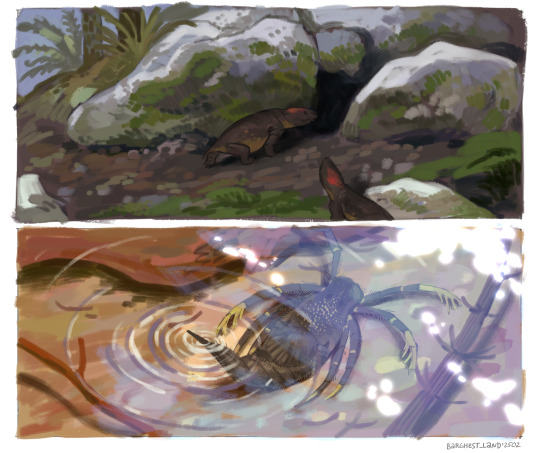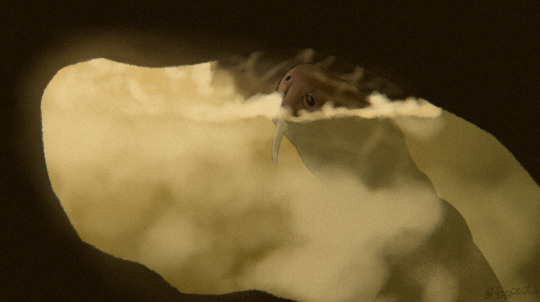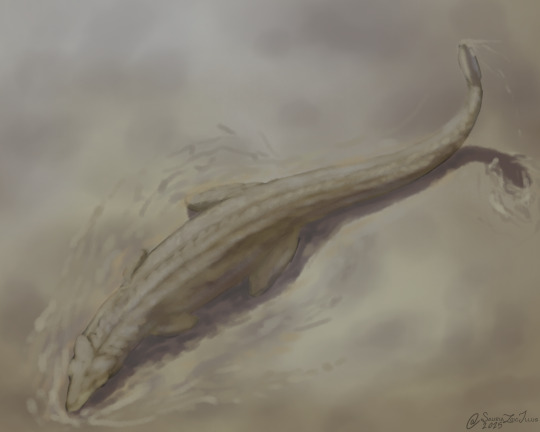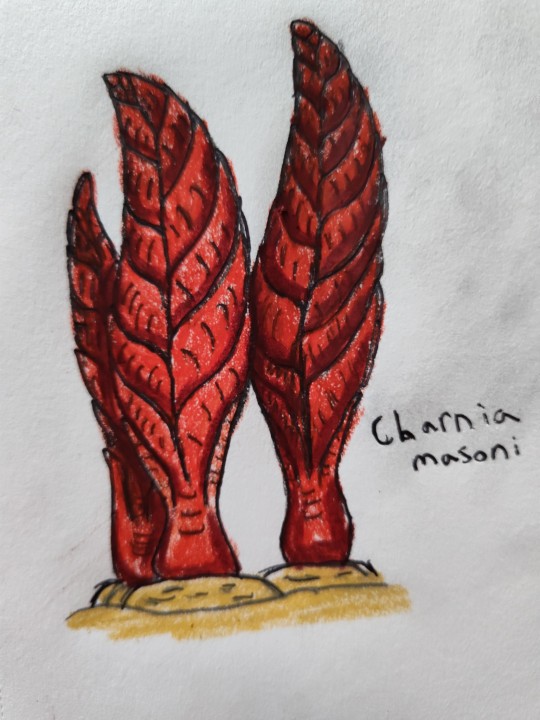#Charnia
Explore tagged Tumblr posts
Text

Would the dungeon trudgers eat Cambrian critters? Probably.
#paleoart#dungeon meshi#dunmeshi#delicious in dungeon#senshi#senshi of izganda#chilchuck tims#chilchuck#marcille#marcille donato#laios touden#laios#ms paint#digital art#anomalocaris#charnia#Cambrian#my art
6K notes
·
View notes
Text


moooooore flocking: diictodon, megarachne, revueltosaurus and charnia
#i actually like all these i think#:3#in love with megarachne HOLY SHIT IT LOOKS SO SILLYYYYYYYY#it's just a :3 literally a “:3” !!!!!!!!#best thing ever#barghestland#art#artists on tumblr#paleoart#paleoland#paleostream flocking#paleostream#diictodon#megarachne#revueltosaurus#charnia#id in alt
2K notes
·
View notes
Text
Super cambrian (and pre-cambrian) aquarium world...
Featuring the new creatures Arandaspis and Hallucigenia, and the new blocks Wiwaxia and Charnia, as well as a fresh new look for Sacabambaspis 🙏 Also featuring Aquarium Glass from Fintastic (what used to be Yet Another Fish Mod because Curseforge doesn't like when you put the word "mod" in your title)
#myart#digital art#artists on tumblr#creature design#art#minecraft#cambrian#mod development#minecraft modding#minecraft mods#anomalocaris#precambrian#ediacaran#charnia#dickinsonia#sacabambaspis#arandaspis#fish#aquarium#minecraft build#modded minecraft
2K notes
·
View notes
Text






























C is for...?
All of the C names in my Paleo Party! Any I'm missing? (Cambrypachycope is in the works, I will bring this little hellion into sticker form)
Stickers || Phone Wallpapers Masterlist
#art#my art#paleoart#paleontology#science#illustration#dinosaur#paleozoic#mesozoic#cenozoic#ediacaran#charnia#ceratosaurus#cladoselache#carnotaurus#compsognathus#chasmosaurus#crinoid
108 notes
·
View notes
Text
paleostream flocking 14th of february 2025
diictodon megarachne charnia revueltosaurus




#my art#paleoart#paleo art#diictodon#megarachne#eurypterid#charnia#revueltosaurus#3d art#low poly#low poly art#blockbench#paleostream
130 notes
·
View notes
Text


My first paleostream flocking :) thank you @barghest-land for always posting your beautiful art and luring me into this discord
#really wish id made them all the same aspect ratio#gosh dangit#paleoart#paleostream#diictodon#megarachne#revueltosaurus#charnia#my art
180 notes
·
View notes
Text
#Paleostream 15/02/2025
here's today's #Paleostream sketches!!!
today we drew Diictodon, Megarachne, Revueltosaurus, and Charnia




#Paleostream#paleoart#digital art#paleontology#digital artwork#artists on tumblr#palaeoart#digital illustration#sciart#id in alt text#AusPalaeo#synapsid#Diictodon#euypterid#sea scorpion#Megarachne#pseudosuchian#Revueltosaurus#Charnia#Ediacaran#sketch#sketches
102 notes
·
View notes
Text



WELCOME TO EDIACARAN MISTAKEN POINT (565Ma). If you thought this environment was like a miniature forest of sea pens, think again. The palaeontologists at MUNPaleobiology are redescribing these wonderful creatures and some, such as Charnia, are now reclining!
#Art#Painting#PaleoArt#PalaeoArt#SciArt#SciComm#DigitalArt#Illustration#Dinosaurs#Birds#Reptiles#Palaeontology#Paleontology#Ediacara#Charnia#FossilFriday
87 notes
·
View notes
Text

Alright science art and paleo art folks go gentle on me. If I was to do these for a gallery showing I think I'd need at least a couple of weeks for research and notes alone. More if I reached out to researchers for paper access and feedback. Speculative armored invertebrates, Dickinsonia, speculative medusa, Charnia, Spriggina, Kimberella, Arkarua, & their trace fossils.
#ancient life#fossil#fossils#ediacaran#science art#paleo art#dickinsonia#charnia#spriggina#kimberella#arkarua#trace fossils#art#drawing#digital art#illustration#palaeosinensis#paleo panthera#paleopanthera#mandala#pencil#digital pencil#reconstruction#paleoart#paleontology#prehistoric#prehistoric animals#animals#ancient
75 notes
·
View notes
Text




Flocking Together
Diictodon/Megarachne
Revueltosaurus/Charnia
#paleoart#prehistory#paleostream#diictodon#megarachne#revueltosaurus#charnia#palaeoblr#made with krita
34 notes
·
View notes
Text

Attack for @leensor!
#I knew I wanted to do something fun for this lil guy. so precious#my art#def want to do more linocut-esque stuff like this#artfight 2024#artfight#alien#plant#charnia#art#illustration#procreate
63 notes
·
View notes
Text

hi girls
33 notes
·
View notes
Text

Transgeder Pride Flag+Charnia sketch for the Trans Visibility Week.
Personal use with credit welcome and encouraged ^^
#trans visibility week#TransDayofVisibility#Internationaltransvisibilityweek#transvisibility#transpride#transgeder#transgenderpride#pride🌈#pride2024#pridedinosaurs#dinosaur#paleoart#palaeoart#queersci#prideinSTEM#charnia#ediacara#ediacarafauna#ediacaraart#charniaart#palaeopride#queerinscience#transinSTEM#tran#transinscience#trans visibility day
48 notes
·
View notes
Note
Do mah boy, Charnia

So good to see some Ediacaran critters get love!!
Charnia masoni Lived 570-550 million years ago Found in England, Australia, Russia, and Canada
Stickers || Phone Wallpapers Masterlist
70 notes
·
View notes
Text
Fun Cambrian fact #13!

#charnia#cambrian era#paleontology#paleozoic#cambrian#precambrian#i have no mouth and i must scream#cambrifact
6 notes
·
View notes
Text

In 1957, schoolboy Roger Mason and his friends were rock climbing in Charnwood Forest in central England where they stumbled across a strange leaf-like pattern embedded in the rocks. The unusual fossil was brought to the attention of local geologist Trevor Ford, who published the discovery in the Journal of the Yorkshire Geological Society. This fossil is particularly fascinating as the rock layers in the area are known to be Precambrian in age. A time previously thought to be prior to the appearance of complex life.
Charnia (named after the Charnwood Forest in which it was discovered) was an unusual frond-like lifeform from the late Ediacaran period, 570-550 Mya. It had segmented leaf-like ridges branching out from the center asymmetrically, indicating it likely evolved before bilateral symmetry, a feature present in nearly every living thing today. Specimens have been found ranging anywhere from 1cm to 66cm in length. It lived on the sea floor feeding on nutrients in the water, and despite its plant-like appearance, the nature of the fossil beds it was discovered in indicates it lived too deep to effectively photosynthesize like plants do. Instead, our current understanding of the lifeform places it as an early member of the animal kingdom.
Charnia is a significant discovery as it is the first Precambrian fossil to be identified as such, completely changing our understanding of how life came to be. So little is currently known about Ediacaran biota that we don't know how or even if these creatures are related to life today.
#charnia#paleoart#paleontology#evolution#ediacaran#precambrian#animal art#animals#animal#fossils#fossil
11 notes
·
View notes